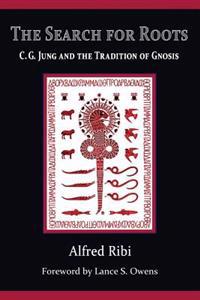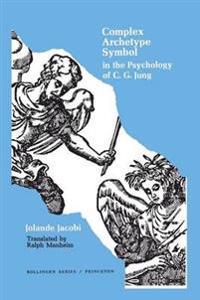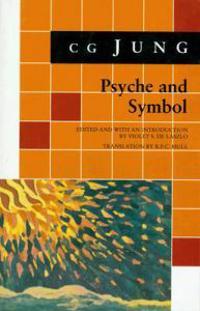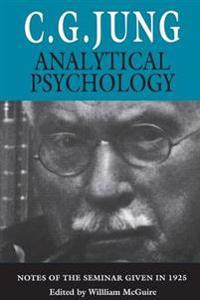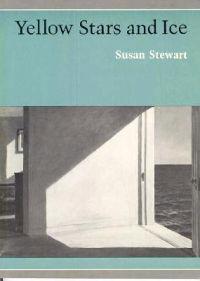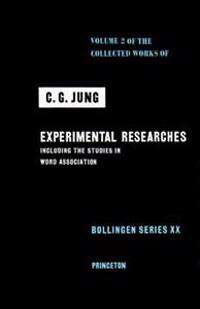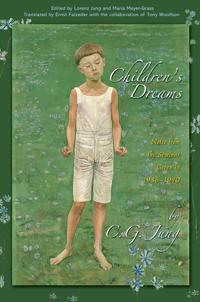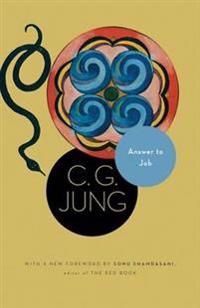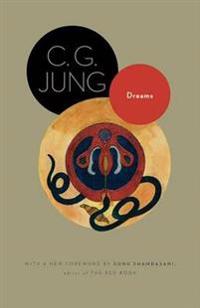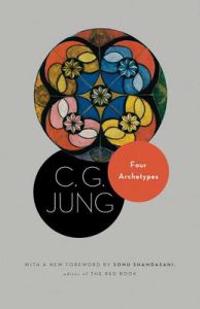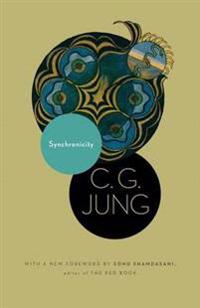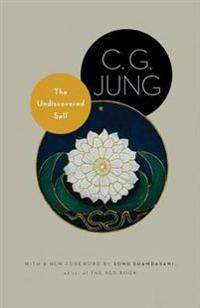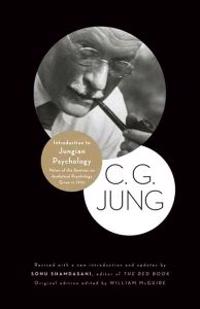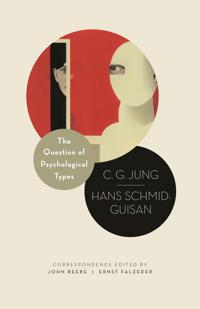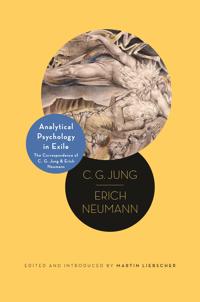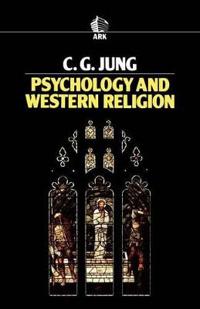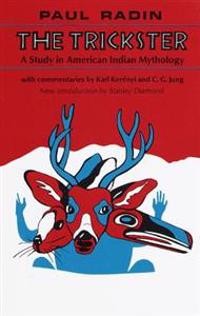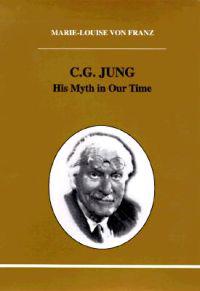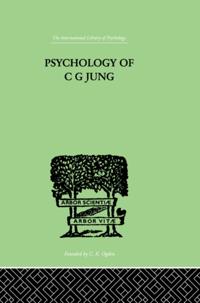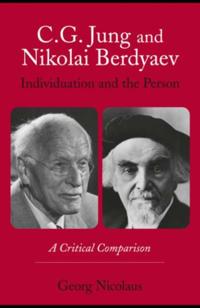The Search for Roots: C. G. Jung and the Tradition of Gnosis (Häftad)
avAlfred Ribi, Lance S. Owens
ISBN: 9780615850627 - UTGIVEN: 2013-07Psychology of Transference, The: From Vol. 16 Collected Works (Övrig)
avC. G. Jung
ISBN: 9780691017525 - UTGIVEN: 1969-06-01This title is extracted from Volume 16. This is an authoritative account based on a series of 16th century alchemical pictures, of Jung's handling of the transference between analyst and patient.[...]
Complex/Archetype/Symbol in the Psychology of C.G. Jung (Häftad)
avJolande Jacobi
ISBN: 9780691017747 - UTGIVEN: 197104As an associate of C. G. Jung for many years, Jolande Jacobi is in a unique position to provide an interpretation of his work. In this volume, Dr. Jacobi presents a study of three central, interrelated concepts in analytical psychology: the individual complex, the universal archetype, and the dynami[...]
C.G. Jung: Psychological Reflections. a New Anthology of His Writings, 1905-1961 (häftad)
ISBN: 9780691017860 - UTGIVEN: 1973-05Carl Gustav Jung, the great Swiss psychologist, who died in 1961 in his eighty-sixth year, was a profound thinker of extraordinary creativity. In the course of his medical practice he reflected deeply on human nature and human problems, and his prolific writings bear witness to his great wisdom and [...]
Psychology and Western Religion: (From Vols. 11, 18 Collected Works) (Övrig)
avC. G. Jung
ISBN: 9780691018621 - UTGIVEN: 1984-12-01This title is extracted from Volumes 11 and 18. This selection of Jung's writings brings together a number of articles that are necessary for the understanding of his interpretation of the religious life and development of Western man: views that are central to his psychological thought.[...]
Psyche and Symbol: A Selection from the Writings of C.G. Jung (Häftad)
ISBN: 9780691019031 - UTGIVEN: 1991-02
The archetypes of human experience which derive from the deepest unconscious mind and reveal themselves in the universal symbols of art and religion as well as in the individual symbolic creations of particular people are, for C. G. Jung, the key to the cure of souls, the cornerstone of his ther[...]Analytical Psychology: Notes of the Seminar Given in 1925 (Häftad)
avC. G. Jung, William McGuire
ISBN: 9780691019185 - UTGIVEN: 199107For C. G. Jung, 1925 was a watershed year. He turned fifty, visited the Pueblo Indians of New Mexico and the tribesmen of East Africa, published his first book on the principles of analytical psychology meant for the lay public, and gave the first of his formal seminars in English. The seminar, cond[...]
C.G. Jung Letters, Volume 2: 1951-1961
ISBN: 9780691097244 - UTGIVEN: 1976-04Beginning with Jung's earliest correspondence to associates of the psychoanalytic period and ending shortly before his death, the 935 letters selected for these two volumes offer a running commentary on his creativity. The recipients of the letters include Mircea Eliade, Sigmund Freud, Esther Hardin[...]
Collected Works of C.G. Jung, Volume 2: Experimental Researches
ISBN: 9780691097640 - UTGIVEN: 1973-03Fourteen papers in which the Swiss psychologist discusses his early studies of word associations and psychophysical phenomena[...]
Children's Dreams (Häftad)
avC. G. Jung
ISBN: 9780691148076 - UTGIVEN: 201008In the 1930s C. G. Jung embarked upon a bold investigation into childhood dreams as remembered by adults to better understand their significance to the lives of the dreamers. Jung presented his findings in a four-year seminar series at the Swiss Federal Institute of Technology in Zurich. "Children's[...]
Answer to Job (Häftad)
avC. G. Jung, Sonu Shamdasani
ISBN: 9780691150475 - UTGIVEN: 201010Considered one of Jung's most controversial works, "Answer to Job" also stands as Jung's most extensive commentary on a biblical text. Here, he confronts the story of the man who challenged God, the man who experienced hell on earth and still did not reject his faith. Job's journey parallels Jung's [...]
Dreams (Häftad)
avC. G. Jung, Sonu Shamdasani
ISBN: 9780691150482 - UTGIVEN: 201010Dream analysis is a distinctive and foundational part of analytical psychology, the school of psychology founded by C. G. Jung and his successors. This volume collects Jung's most insightful contributions to the study of dreams and their meaning. The essays in this volume, written by Jung between 19[...]
Four Archetypes: Mother, Rebirth, Spirit, Trickster (Häftad)
avC. G. Jung, Sonu Shamdasani
ISBN: 9780691150499 - UTGIVEN: 201010One of Jung's most influential ideas has been his view, presented here, that primordial images, or archetypes, dwell deep within the unconscious of every human being. The essays in this volume gather together Jung's most important statements on the archetypes, beginning with the introduction of the [...]
Synchronicity: An Acausal Connecting Principle (Häftad)
avC. G. Jung, Sonu Shamdasani
ISBN: 9780691150505 - UTGIVEN: 201010Jung was intrigued from early in his career with coincidences, especially those surprising juxtapositions that scientific rationality could not adequately explain. He discussed these ideas with Albert Einstein before World War I, but first used the term "synchronicity" in a 1930 lecture, in referenc[...]
The Undiscovered Self: With Symbols and the Interpretation of Dreams (Häftad)
avC. G. Jung, Sonu Shamdasani
ISBN: 9780691150512 - UTGIVEN: 201010These two essays, written late in Jung's life, reflect his responses to the shattering experience of World War II and the dawn of mass society. Among his most influential works, "The Undiscovered Self" is a plea for his generation--and those to come--to continue the individual work of self-discovery[...]
Introduction to Jungian Psychology: Notes of the Seminar on Analytical Psychology Given in 1925 (Häftad)
avC. G. Jung, William McGuire
ISBN: 9780691152059 - UTGIVEN: 201112In 1925, while transcribing and painting in his "Red Book," C. G. Jung presented a series of seminars in English in which he spoke for the first time in public about his early spiritualistic experiences, his encounter with Freud, the genesis of his psychology, and the self-experimentation he called [...]
The Question of Psychological Types (Inbunden)
avC. G. Jung, Hans Schmid-Guisan
ISBN: 9780691155616 - UTGIVEN: 201301In 1915, C. G. Jung and his psychiatrist colleague, Hans Schmid-Guisan, began a correspondence through which they hoped to understand and codify fundamental individual differences of attention and consciousness. Their ambitious dialogue, focused on the opposition of extraversion and introversion, de[...]
Analytical Psychology in Exile (Inbunden)
avC. G. Jung, Erich Neumann, Martin (EDT) Liebscher
ISBN: 9780691166179 - UTGIVEN: 2015-03C. G. Jung and Erich Neumann first met in 1933, at a seminar Jung was conducting in Berlin. Jung was fifty-seven years old and internationally acclaimed for his own brand of psychotherapy. Neumann, twenty-eight, had just finished his studies in medicine. The two men struck up a correspondence that w[...]
Psychology and Western Religion (Häftad)
avC. G. Jung
ISBN: 9780744800913 - UTGIVEN: 198812Jung's principle interest was in the psychology of Western men and women. The son of a pastor, he was also deeply interested in their religious life and development. This selection of his writings enables us to understand his interpretation of Western religion as central to his psychological though[...]
C. G. Jung (Pocket)
avMarie-Luise von Franz
ISBN: 9780919123786 - UTGIVEN: 1998-02Jung was the first modern scientist to take seriously the reality of the unconscious and to dialogue with it throughout his life. He paid scrupulous attention to his dreams and to what they had to say concerning his personal life and world events of his day. Von Franz traces the development of Jung�[...]
Complex/Archetype/Symbol In The Psychology Of C G Jung
ISBN: 9781136300684 - UTGIVEN: 2015-06First Published in 1999. Routledge is an imprint of Taylor & Francis, an informa company.
Psychology of C G Jung
ISBN: 9781136300967 - UTGIVEN: 2015-06First published in 1999. Routledge is an imprint of Taylor & Francis, an informa company.
C.G. Jung and Nikolai Berdyaev: Individuation and the Person
ISBN: 9781136894848 - UTGIVEN: 2015-06This book explores C. G. Jung's psychology through the perspective of the existential philosopher Nikolai Berdyaev, drawing striking parallels between Jung's theory of individuation and Berdyaev's understanding of the person. Placing Jung and Berdyaev firmly within the context of secular humanism, N[...]

